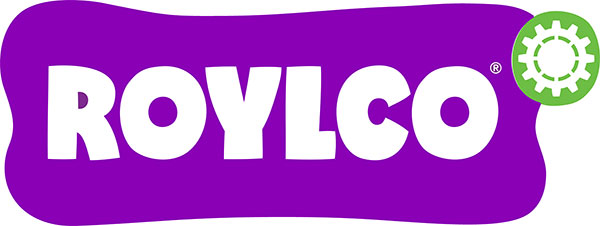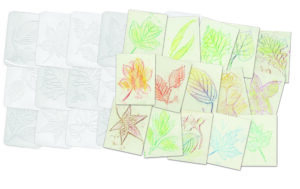As educators and parents seek ways to engage children in hands-on, meaningful experiences, nature-based learning has become an increasingly popular approach. But what exactly is nature-based learning? Simply put, it’s an educational approach that uses the natural world as a tool to teach concepts and skills across various subjects. Through nature-based learning, children build a deeper connection with the environment, fostering both academic and social-emotional growth. Whether implemented in classrooms or homeschool settings, this method of learning emphasizes curiosity, exploration, and respect for nature.
–
The Rise of Nature-Based Learning
In recent years, nature-based learning has gained significant attention for its many benefits. Studies have shown that spending time in nature can enhance children’s cognitive abilities, improve focus, and reduce stress. In educational environments, incorporating elements of nature-based learning fosters creativity, curiosity, and critical thinking—skills that are essential for lifelong learning.
For classroom teachers, nature-based learning offers a fresh way to approach standard subjects like science, math, and art. Meanwhile, homeschooling families appreciate the flexibility of incorporating the outdoors into lessons, giving children a chance to explore and learn at their own pace. The versatility of nature-based education makes it an ideal choice for both traditional classrooms and home learning environments.
–
Benefits of Nature-Based Learning for Children
Nature-based learning can support children’s development in unique ways, benefiting them academically, physically, and emotionally. Here are some key advantages:
- Increases Engagement: Nature is filled with endless sources of fascination, inspiring children to ask questions, make observations, and actively participate in their learning.
- Improves Focus and Reduces Stress: Spending time in nature has been shown to calm the mind and improve focus, which can lead to better retention of information and improved behavior.
- Encourages Physical Activity: Many nature-based activities involve movement, helping children stay active and improve motor skills.
- Boosts Social Skills and Emotional Resilience: Working in groups to explore nature encourages teamwork, problem-solving, and communication skills, all of which build emotional resilience.
–
How to Implement Nature-Based Learning in the Classroom
For classroom teachers looking to incorporate nature-based learning, there are many simple yet effective ways to bring the natural world indoors. Whether you’re introducing topics like plants, animals, weather, or ecosystems, using hands-on tools can create an immersive experience.
Roylco’s Leaf Rubbing Plates are a great example of how to integrate nature-based learning indoors. These plates replicate the textures of real leaves, allowing children to explore the intricate details of leaf veins and shapes. Teachers can create engaging science lessons by pairing the Leaf Rubbing Plates with lessons on plant biology, ecosystems, or seasonal changes, making it a fun and educational experience for students of all ages.
–
Nature-Based Learning Tip:
Set up a “nature corner” in the classroom where students can engage with items like rocks, leaves, and Roylco’s Leaf Rubbing Plates. Pair the plates with crayons or colored pencils, allowing children to create leaf rubbings and learn about different types of plants.
–
Nature-Based Learning in Homeschool Settings
For homeschooling families, nature-based learning offers endless opportunities to blend academic learning with hands-on exploration. This approach to learning gives homeschoolers the flexibility to tailor their lessons to each child’s unique interests and needs, incorporating seasonal or local plants, wildlife, and natural elements into everyday learning.
Roylco’s Leaf Rubbing Plates can be a fantastic resource for homeschooling families. With these plates, parents can introduce children to plant anatomy, botany, and even art through leaf rubbings. These plates also make it easy for parents to bring nature into their homes, offering a weather-proof option to study nature on rainy days or during colder seasons.
–
Nature-Based Learning Tip:
During outdoor excursions, collect various leaves and compare them with the leaf shapes on the Leaf Rubbing Plates. Discuss differences in leaf structure, shape, and color, helping children connect real-life examples with their rubbings.
–
Activities Using Roylco’s Leaf Rubbing Plates
Here are a few nature-based activities using Roylco’s Leaf Rubbing Plates that can be used in both classrooms and homeschooling:
- Create a Leaf Book: Have children use the Leaf Rubbing Plates to make leaf rubbings of different species. They can then compile these rubbings into a booklet, labeling each leaf type and learning more about local flora.
- Seasonal Leaf Study: Encourage children to observe how leaves change throughout the seasons. Create leaf rubbings each season and compare them, discussing how weather and seasonal changes impact plant life.
- Botany Basics: Teach children about plant anatomy by using the Leaf Rubbing Plates to explore leaf parts like veins and petioles. Pair this activity with a microscope or magnifying glass for a close-up look at real leaves.
–
Conclusion
Nature-based learning encourages children to explore the world around them with curiosity and creativity. By integrating elements like Roylco’s Leaf Rubbing Plates, educators and parents can create meaningful, hands-on learning experiences that teach important academic concepts while fostering a deep appreciation for nature. Whether you’re in a classroom or a homeschooling environment, nature-based learning offers an enriching and inspiring way to support children’s growth and development.
Ready to explore the wonders of nature in your learning environment? Visit Roylco’s website to learn more about Leaf Rubbing Plates and other nature-based learning tools that can transform your educational approach.

